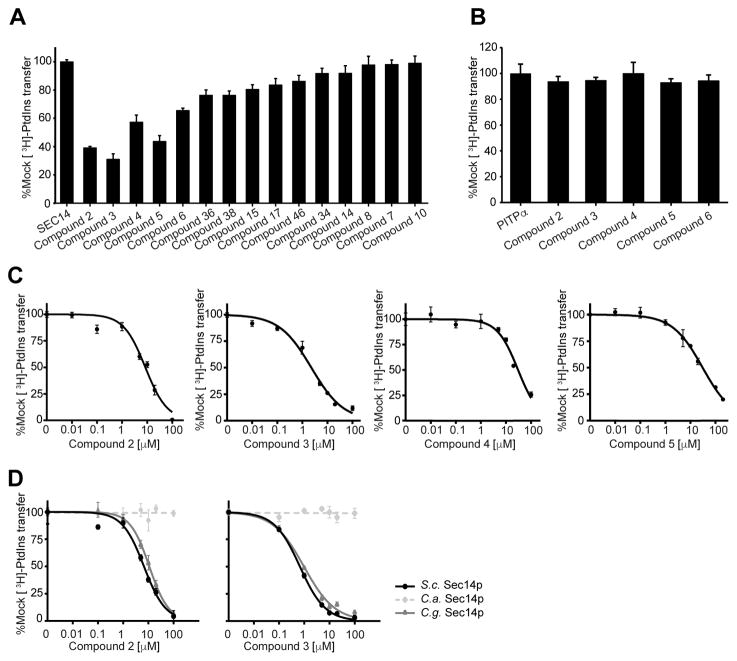Figure 3.
Analysis of lipid transfer inhibition with recombinant Sec14p. A) Fifteen compounds were tested for inhibition of Sec14p-mediated [3H]-PtdIns transfer at a fixed concentration of 20 μM SMI (see Materials and Methods). Values represent mean ± s.e.m. of triplicate assay determinations from two independent experiments. Total radiolabel inputs per assay ranged from 8356–9604 c.p.m., backgrounds from 436–489 c.p.m. and the transfer efficiency from 14–16% of total input [3H]-PtdIns. Activities were normalized against the mock condition set at 100%. B) The five small molecules that inhibited Sec14p [3H]-PtdIns transfer by > 30% in the end-point assays in (a) were tested for inhibition of the structurally unrelated mammalian PITPα. [3H]-PtdIns input for these assays ranged from 10703–11202 c.p.m., assay background from 403–415 c.p.m., and [3H]-PtdIns transfer efficiencies ranged from 10%-11% of total input radiolabel. Values represent mean + s.e.m. of triplicate assay determinations from two independent experiments. C) IC50 values for Sec14p-active compounds. Small molecule inhibitors of Sec14p were titrated into PtdIns-transfer assays to determine IC50 values. [3H]-PtdIns input into these assays varied from 9649 - 11034 c.p.m, backgrounds ranged from 243–648 c.p.m., and transfer efficiencies as functions of total [3H]-PtdIns input ranged from 12–18%. D) IC50 curves for compounds 2 and 3 tested against Sec14p of S. cerevisisae, C. albicans and C.glabrata. IC50 values represent a 95% confidence interval from two independent experiments, with triplicate determinations for each data point

